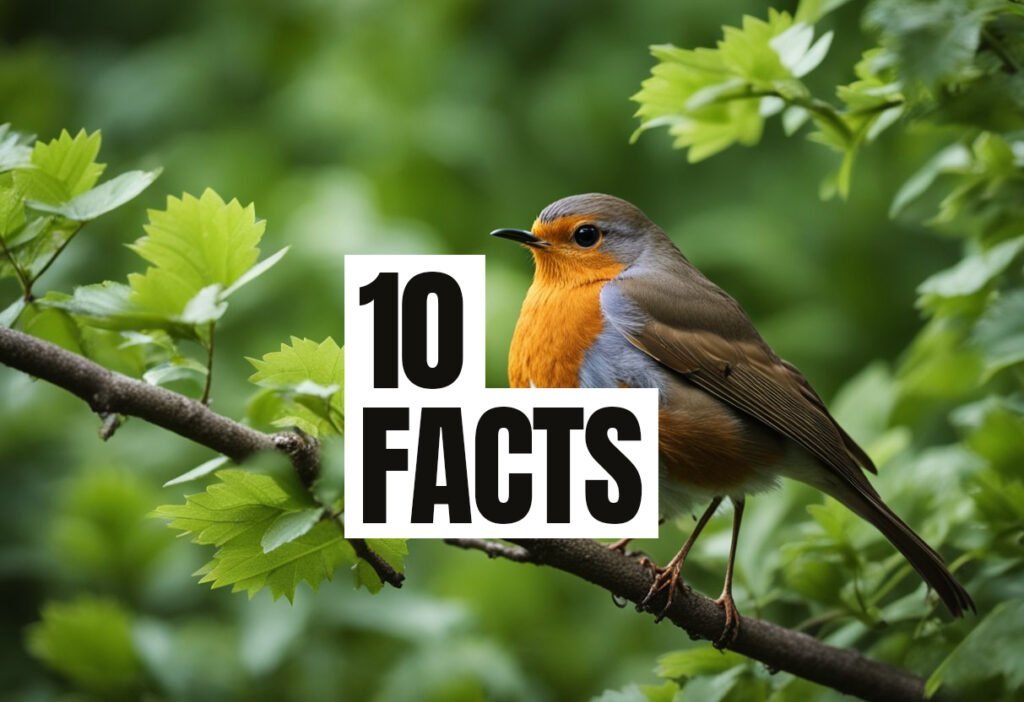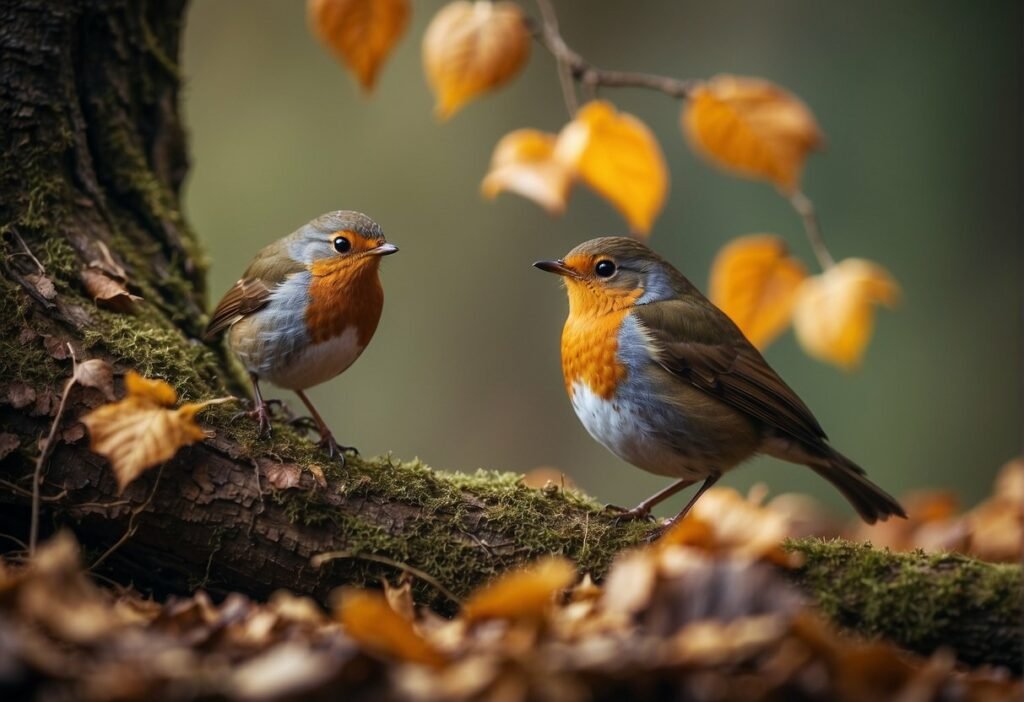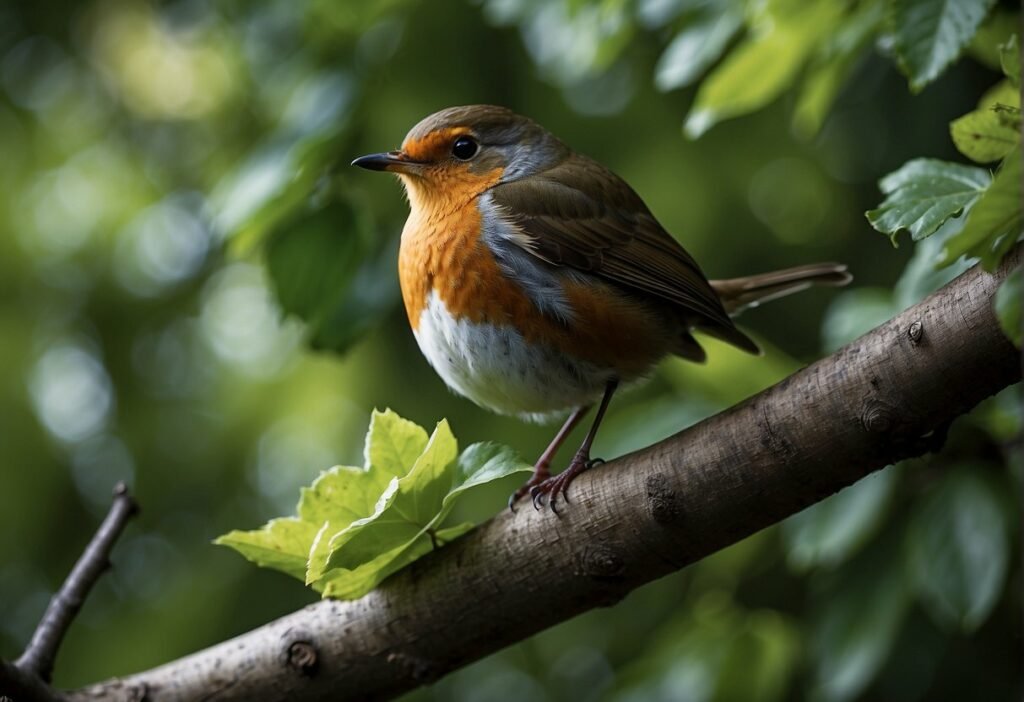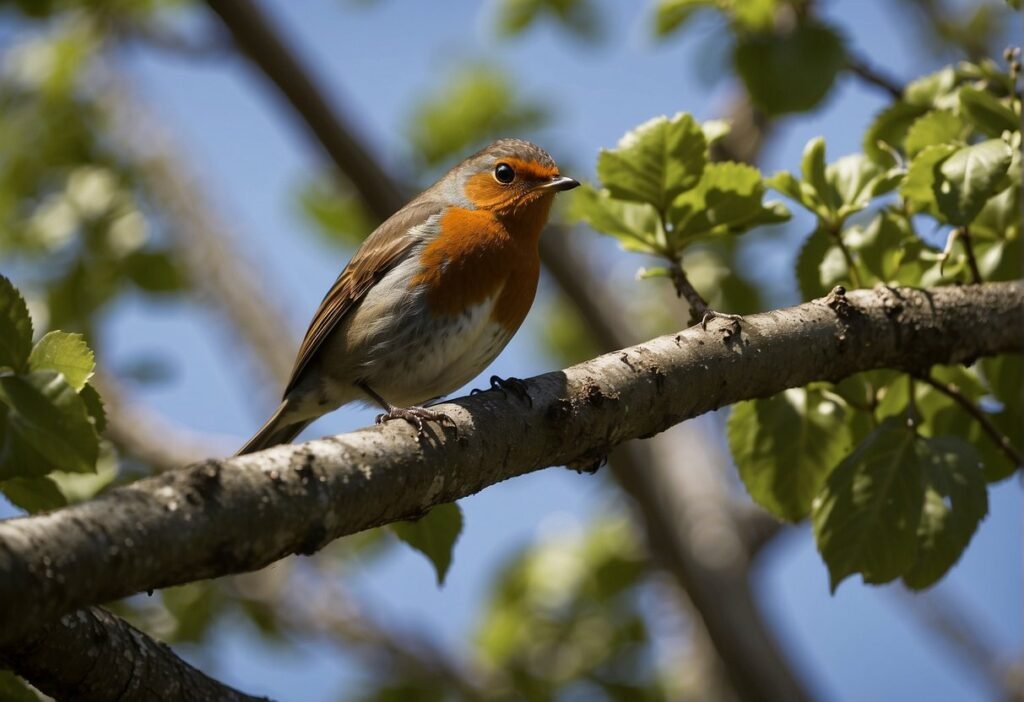Robins are a common sight in North America, and their bright red breasts and cheerful songs make them a favorite among bird watchers. But when do these feathered friends start building their nests? The answer, as with many things in nature, depends on a few different factors.

For American robins, nesting typically occurs in the spring. As the weather warms up and the days get longer, these birds begin to prepare for the breeding season. During this time, male robins will establish territories and start to court potential mates. Once a pair has formed, they will work together to build a nest and raise their young.
While spring is the most common time for robins to nest, there are some variations to this pattern. In areas with milder climates, robins may start nesting as early as January or February. On the other hand, in colder regions, they may wait until May or even June to begin breeding. Additionally, robins may sometimes attempt to nest twice in a single season, with the second brood occurring later in the summer.
Robin Nesting Habits and Breeding Season
Robins are one of the most common birds found in North America and are known for their beautiful songs and bright orange breasts. They are also known for their nesting habits, which are quite unique. In this section, we will explore the nesting habits and breeding season of robins.
Identifying the Nesting Season
Robins typically breed during the spring and summer months, with the breeding season starting in March and ending in July. During this time, male robins will sing to attract females and establish their territory. Once a female has been attracted, the pair will mate and begin building their nest.
Nesting Behaviors and Mating Patterns
Robins are monogamous and will mate with the same partner each breeding season. Once a pair has mated, the female will lay a clutch of 3-5 eggs, which will hatch after approximately two weeks. The female will then care for the young, feeding them insects and worms until they are ready to leave the nest. Robins can have multiple broods in a single breeding season, with each brood taking approximately one month to fledge.
Choosing Nest Sites and Materials
Robins are known for building their nests in a variety of locations, including trees, bushes, and even on man-made structures such as porches or light fixtures. They typically choose a sheltered location that is protected from the wind and rain. The nest itself is made from a variety of materials, including twigs, leaves, mud, and grass. The female will use her body to shape the nest and create a cup-like structure for the eggs.
In conclusion, robins have unique nesting habits and breeding patterns that make them a fascinating bird to observe. By understanding their behaviors and preferences, we can better appreciate these beautiful creatures and their contribution to the natural world.
Nest Development and Robin Lifecycle
Robins are known for their distinctive blue eggs and their cheerful song. They are a common sight in North America, and many people wonder when these birds build their nests.
From Egg to Fledgling
Robin eggs typically hatch after an incubation period of 14 days. The young birds, called nestlings, are born naked and blind. Over the next few days, they develop a layer of down feathers and begin to open their eyes.
Within two weeks, the nestlings are ready to fledge, or leave the nest. During this time, they practice flapping their wings and strengthening their muscles. Once they are ready, they will hop out of the nest and take their first flight.
Feeding and Protecting the Young
Robins are diligent parents and will protect their young from predators. They build their nests in trees or shrubs, often using mud and grass to hold them together.
To feed their young, robins hunt for insects, worms, and other small animals. They will often feed their nestlings up to 100 times a day. As the nestlings grow, they become more independent and will begin to feed themselves.
Overall, robins nest in the spring and summer months, typically from April to July. During this time, they can be seen building nests, laying eggs, and raising their young.
Frequently Asked Questions
In which months are robin eggs typically laid?
Robins typically lay their eggs in the early spring months, with March and April being the most common months for egg-laying. However, the exact timing can vary depending on the climate and location. In warmer areas, robins may begin laying eggs as early as February, while in colder regions, egg-laying may be delayed until May.
Do robins build nests during the winter season?
No, robins do not build nests during the winter season. They typically begin building their nests in early spring, shortly before laying their eggs. During the winter, robins migrate to warmer climates where they can find food and shelter.
What does it signify when robins choose to nest on human structures?
When robins choose to nest on human structures, such as buildings or light fixtures, it is usually a sign that they are adapting to changes in their natural habitat. As urbanization continues to encroach on natural habitats, robins are increasingly forced to seek out alternative nesting sites. Nesting on human structures may also provide robins with protection from predators.
Are robin nests reused in subsequent breeding seasons?
Yes, robin nests are often reused in subsequent breeding seasons. After the young have fledged, the adult birds may make minor repairs to the nest before using it again. However, if the nest has been heavily damaged or infested with parasites, the birds may choose to build a new nest in a different location.
How often can robins be expected to nest within a single year?
Robins typically raise one or two broods of chicks per year, although in some cases they may raise three or four. The exact number of broods can depend on factors such as the availability of food and the length of the breeding season.
What duration do fledgling robins spend in the nest before they are ready to leave?
Fledgling robins typically spend around two weeks in the nest before they are ready to leave. During this time, the parents will continue to care for and feed the chicks until they are strong enough to fly and fend for themselves. Once the fledglings leave the nest, they may continue to receive care from their parents for several more weeks before becoming fully independent.




